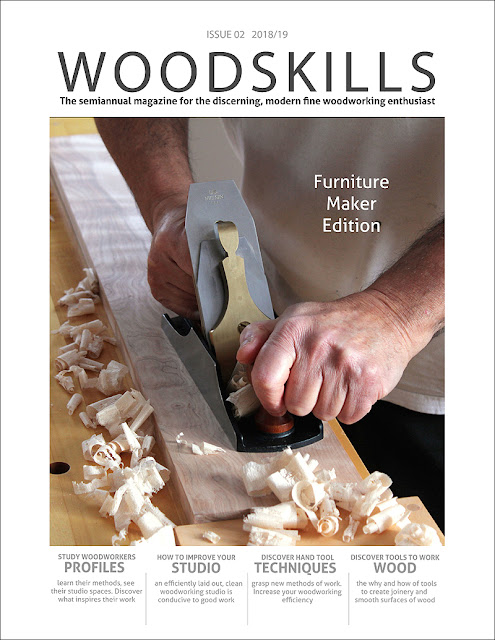Original cabinet on stand designed and created in 2012. Door and side panels are veneered with figured Big Leaf maple, interior is soft maple, back panels are Ambrosia maple, stand is cherry.
The design adheres to the principles of Krenov, construction follows his methods and philosophy, and the aesthetic is clean, minimalist and devoid of ornamentation. This has also become my furniture making style in the past 14 years or so. I discovered the work of James Krenov about 14 years ago and read his books quite regularly, each time extracting a new nuance or so. This was the age when learning from woodworking books was the preferred way of understanding woodworking. I followed Krenov's writing and tried to glean as much technical information from the grainy black and white photos in several of his books. A little while later, I attended a furniture making school that was founded on the principles of James Krenov and College of the Redwoods. It was one of a very few schools in North America espousing the tradition of hand work. This experience opened my eyes to a slower form of furniture making where the focus is on the wood itself and attention to detail is paramount. Where am I going with this? Well, between the years 2012 and 2018 I pursued a few other interests, mainly wood sculpture, furniture design, video production, writing books and publishing a semi-annual woodworking magazine WOODSKILLS. As well as returning to school to follow a one year business program, my woodworking continued.
My woodworking (2012-2018) followed a different path where I embraced modern, contemporary design. In this intervening period, I entered furniture design shows with very contemporary console table and chair designs. The years went by while I yearned to revisit that original cabinet on stand and hopefully make another. I had even developed a set of plans and drawings of the cabinet at the time thinking it would be a matter of a few weeks before I could start on another. Fast forward to late 2018 and I finally set aside time to fulfill this build. The following are progress shots. This version of the cabinet on stand has a slightly modified interior layout than the original. The stand is configured differently only because it was possible to do so and I wanted it to be both different and unique. A couple of new additions are a hidden, secret compartment, inlay on the front apron of the stand and the cabinet floats on the stand. Otherwise, the design follows the original piece created back in 2012.
Installing knife hinges in 2018 version of cabinet on stand
Fitting door panels an creating lip and rabbet where they join.
Interior layout of new cabinet mocked up on cabinet base (using a few of the tools I design + make).
Cabinet mocked up and drawer fronts fitted. Hidden compartment also visible below right-hand drawer compartment.
New set of three dovetailed drawers created (at bottom).
New dovetailed drawers fitted into respective drawer compartments.
The legs, aprons, rails for stand are mortised and prepared for loose tenon and dowel joinery (using modified horizontal mortiser).
Creating mortises for drawer and door pulls ( cocobolo heartwood and sapwood combination)
French Polish process for door panels and cabinet sides.
New version of cabinet completed. Note the dropped front apron with inlay and floating cabinet on side rails.
Cabinet with figured Big Leaf maple door and side panels and cocobolo pull. Cherry stand with inlay.
Interior of 2018 cabinet. Compartments are flipped from 2012 cabinet. Secret compartment behind the small blue cup at lower right.
The new cabinet on stand seen here. Final detail was the addition of a single, small bullet catch at top of right-hand door.
So I've fulfilled my requirement of building a Krenov-inspired piece of furniture every six years or so 👊😉












































